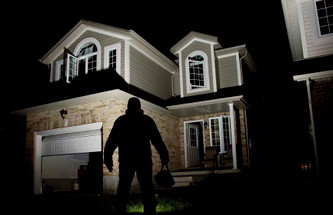Posted by Home Security on 26th Sep 2017
7 Tips to Burglar Proof the Doors in Your Home
I know I’ve been talking a lot about home security lately – burglar deterrents, how to burglarproof your windows, questions to ask your locksmith company – but I come from the camp of “the best defense is a good offense.” Or better safe than sorry. An ounce of prevention is worth a pound of cure.
You get the drift.
The point is, there are things you can do to secure your home and your family. Do you have to do every, single thing from every, single list? Of course not. But if you do a little of this and a little of that, you’ll be a lot safer than if you did nothing at all.
We’ve covered a lot of the basics, but I want to circle back to doors. Did you know that an estimated 70% of home invaders enter through a door (as opposed to a window), which includes front doors, patio doors and even garage doors? That’s a pretty surprising statistic, considering doors are usually made of solid wood while windows are fragile glass. But it’s also a good statistic, because it gives us a jumping-off point for home security.
How to Burglarproof Your Doors
1. Solid Security
Bottom line: All exterior doors need to be solid and kick-proof. That means you want a solid wood door, or at the very least a door with a solid-wood core. Other options are fiberglass or metal. If you choose a metal door, make sure that it has interior reinforcement and a lock block, to prevent a thief from bending it open with a car jack. Reinforced steel doors are your sturdiest option, but they also require extra maintenance to prevent rust.
2. Go Windowless
Door windows allow light to filter into your entranceway and they look inviting, but they’re also a home security risk. If the window is located within arm’s reach of your lock, it is easy to smash the window and unlock your door from the inside. If you are installing a new door, choose one without a window. If you already have a windowed door – or fall absolutely in love with a door that has a window – you’ll need to take a few extra security measures. Choose reinforced glass, and consider adding decorative bars or metal reinforcement. And if it doesn’t break local fire codes, you should also install a secondary door lock at floor level – far away from a burglar’s reach.
3. See Ya, Shrubbery
Everyone loves a flowery landscaping, but it belongs nowhere near your door (or windows). Never plant shrubs, bushes or trees to obscure your doors; they make it too easy for a burglar to lie in wait and then do the deed without anyone the wiser.
4. Install a Deadbolt
They say a door is only as strong as its lock – and they couldn’t be more right. Even the strongest reinforced steel door can be neutralized by one swift kick if your lock does not extend deep enough into the doorframe. When choosing a deadbolt, go with a brand name and don’t choose the cheapest model. (Note: I’m not saying you need a $150 deadbolt, just don’t choose the $5 model from the local dollar store.)
5. Secondary Protection
Speaking of deadbolts, you can even install a secondary, one-sided deadbolt. These deadbolts do not have keyed access to the outside, so they can only be used when you are home (to engage the lock from the inside), but they’re nearly impossible for a burglar to bypass. These locks can save you from a dangerous home invasion while you sleep or spend time with your loved ones.
6. Don’t Forget the Frame
Don’t overlook the frame and doorjamb. These two elements are essential to door security – one swift kick to a weak jamb or frame, and your door cracks open like a steamed clam – but are often overlooked. Instead of a thin, flimsy strike plate, install a deeper box strike (a type of steel pocket that houses the bolt part of your deadbolt); to this, affix 3″ screws that burrow deep into the wall studs, instead of just the doorjamb. And speaking of, you’ll want to reinforce your doorjamb with galvanized steel to withstand shoulders, kicks, and other attempts to break your door in.
Relevant Products: Bolt Buddy , Don-jo Products
7. Sliding Doors
Burglars often think of sliding glass doors as invitations, but there’s plenty you can do to secure these decorative entry points. First, make sure your doors are made from reinforced glass or plastic (like polycarbonate), and not simple, thin glass. Always keep glass doors locked. Place a wooden or metal dowel in the track – the rod should measure no more than 1/4″ less than the track length – to prevent the doors from being opened by force. Make sure your alarm company has installed motion sensors or vibration sensors to sound the alarm in case the glass is broken. And consider installing curtains on the inside, so as not to give burglars a wide-screen view into your home.

